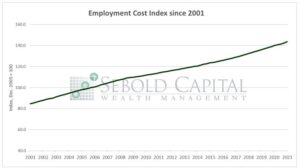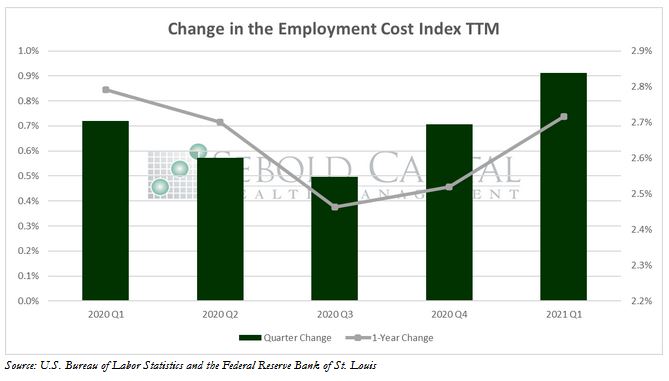 The Employment Cost Index is a quarterly series published by the U.S. Bureau of Labor Statistics that tracks movement in the cost of labor, as measured by wages and benefits, at all levels of a company. Wages track the amount employers pay in salaries and hourly labor, while benefits measure a combination of health insurance, paid time off, and retirement plans. The data is compiled through separate surveys of nonfarm businesses, as well as state and local governments. The index is used by economists, investors, and employers to track the conditions of the labor market or set pay scales for their employees.
The Employment Cost Index is a quarterly series published by the U.S. Bureau of Labor Statistics that tracks movement in the cost of labor, as measured by wages and benefits, at all levels of a company. Wages track the amount employers pay in salaries and hourly labor, while benefits measure a combination of health insurance, paid time off, and retirement plans. The data is compiled through separate surveys of nonfarm businesses, as well as state and local governments. The index is used by economists, investors, and employers to track the conditions of the labor market or set pay scales for their employees.
In the first quarter of 2021, the Employment Cost Index rose by 0.9% to a reading of 143.7. Salaries and wages increased 1.0% and have risen by 2.7% over the past twelve months. Meanwhile, total benefits climbed by 0.6% last quarter and have risen by 2.5% in the past year. Overall, the cost of employment has increased by 2.7% since the first quarter of 2020.
The cost of labor continued to increase in early 2021 with wage growth picking up, adding to the concerns of higher inflation as the economy reopens. Despite stubbornly high unemployment, businesses are finding it difficult to find workers to the meet the surging domestic demand. The shortage of workers can be attributed to some parents being forced to stay home to take care of their children—as many schools have not fully reopened yet—and expanded unemployment benefits, which might discourage some workers from returning to their jobs. If the scarcity persists, employers may be forced to pay a premium for labor, which would likely add to the inflationary pressure in the economy. However, once the additional unemployment benefits run out and more schools are able to reopen, more people will likely seek to return to the workforce, alleviating some of the current shortage.

April 30, 2021
